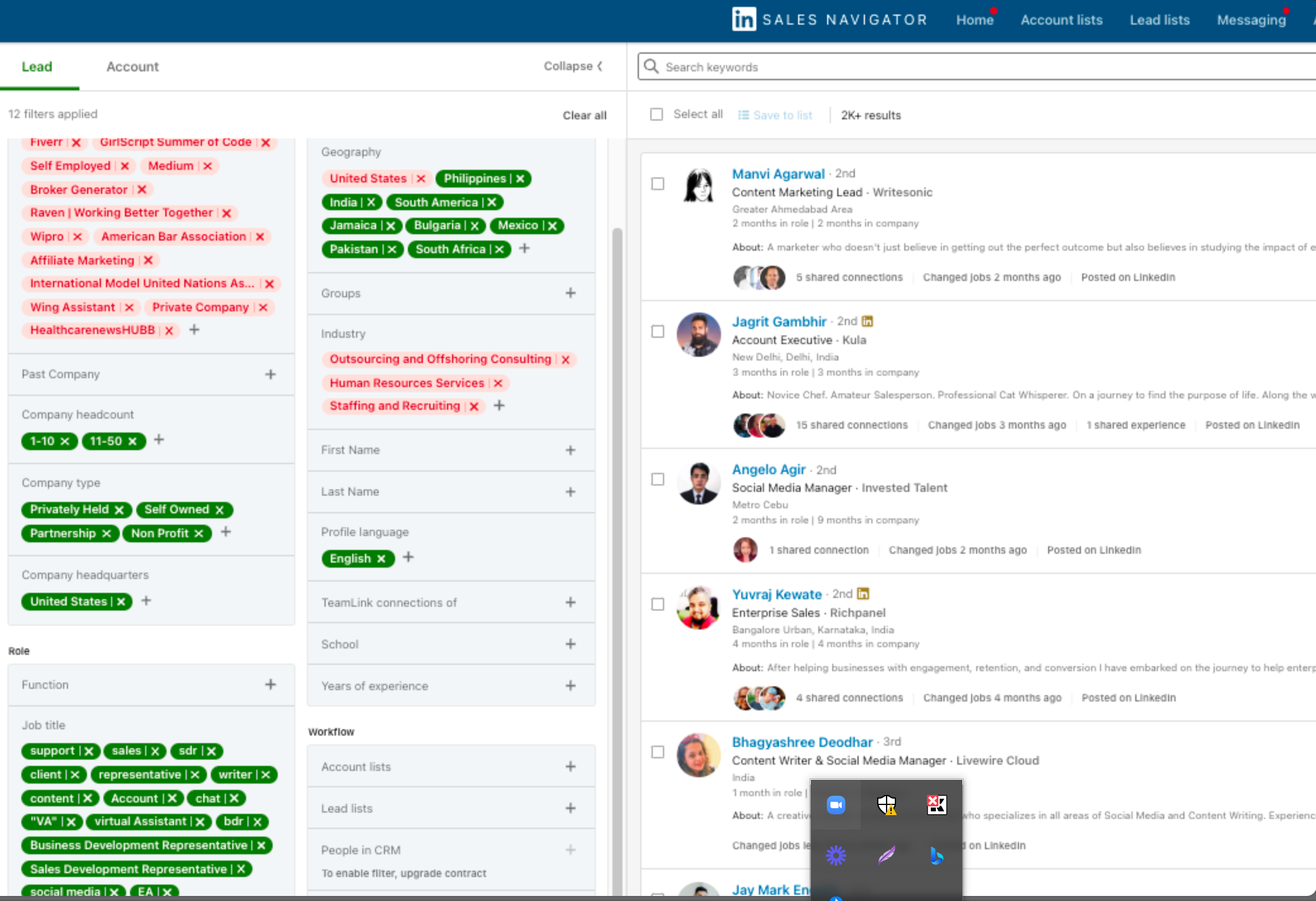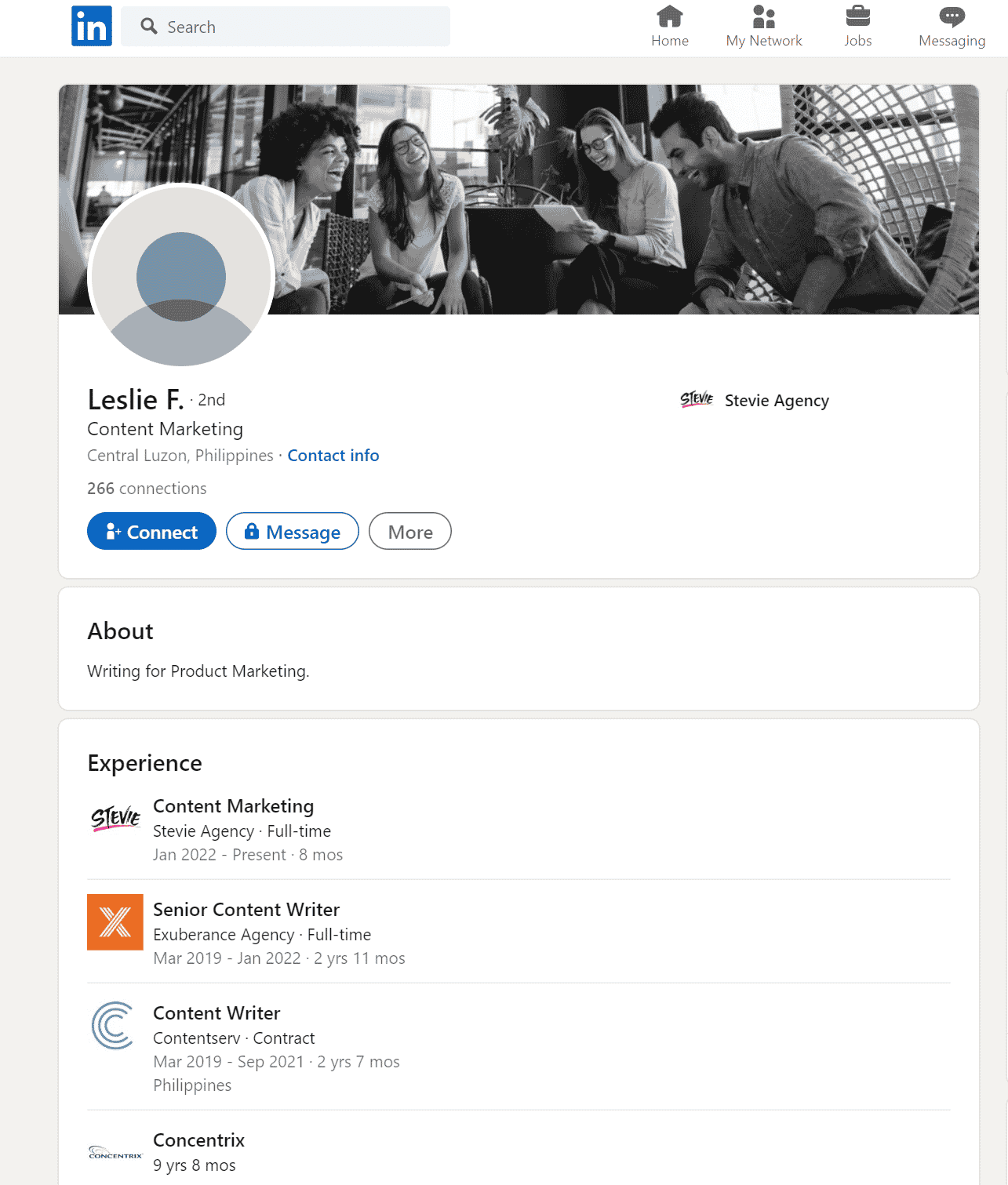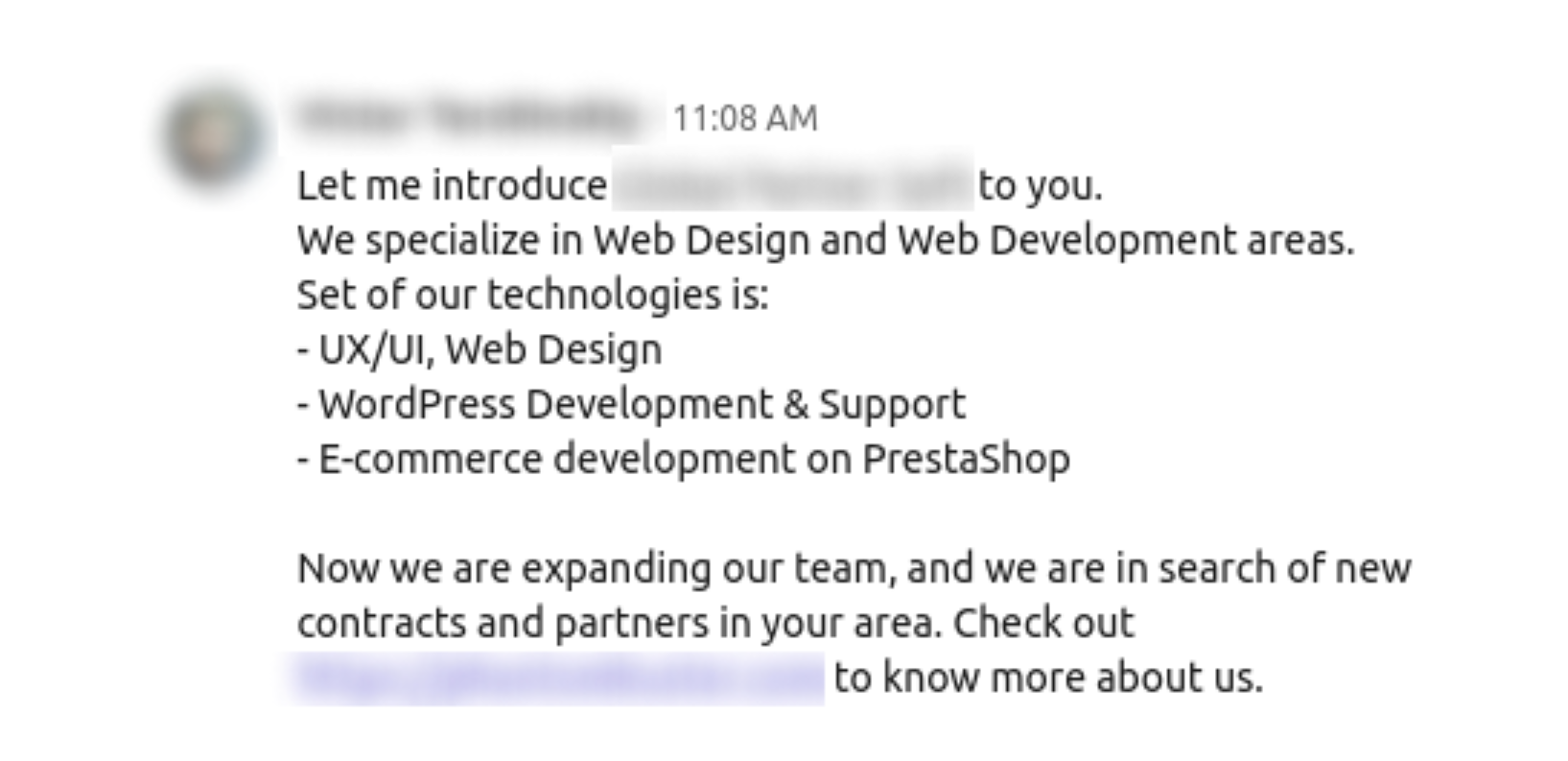It’s the perfect sales campaign….
You have a great sales pitch with tons of adjectives and smart copy. You even have a long list of prospects who seem to be a good fit.
After all, you purchased the data from a reputable provider… And the automation tool that you invested in is apparently one of the best personalization tools out there.
Everything seems positive… Until you hit send.
If this sounds like a common thread in your outreach: “No thanks, this isn’t for me.”
Or even worse… No replies at all..
You’re probably asking yourself what went wrong.
If this is you, or your sales team, don’t worry, we have the answers that can help you figure out what needs to change.
Here are some of our best tips for generating more high-quality sales leads from Linkedin.
(And if you don’t have the time to figure out a fail-proof lead generation strategy, hop on a free 15-minute strategy session with Salesbread.)
Tip 1: Refine your target list
Who is your ideal target audience?
You probably have an idea of which kind of clients you’re after. But, have you had a look at who is buying from you?
This buyer intent data could be a game changer for building a list of potential prospects.
We have seen too many other lead generation agencies or businesses build very basic lists of prospects resulting in poor campaigns.
Meaning that they might say, “We would like to target CFOs and finance VPs in the healthcare space…”
This might be a start…But this is where many agencies go wrong. They targeted all CFOs and finance VPs in all healthcare.
The problem is that this is too generalized. You might have an insanely huge list, but what’s the point if you’re going after all the wrong kinds of people?
In order for lead generation to work, you need to find:
- The right prospects who need what you’re selling and who have the budget.
How do you do this? By building, lists are that ultra-refined
For example, you can’t just say you need CFOs in the healthcare space, you have to ask yourself:
- Which healthcare space? Dental, hospitals, psychiatric, clinics, health insurance?
- If you are targeting hospitals, which hospitals? Ones that have 500 beds or less?
- Which locations are you targeting? Certain cities, countries, or states?
- What services do they offer? Outpatient? Emergency?
- What departments do they have? How many employees do they have? Who is on their payroll?
How do you find this exact information?
Not by guessing..
But rather by analyzing who has purchased your service or product within the last 6 months.
When you do this, patterns will begin to emerge and this will give you an indication of who your ideal target client is.
If your list is clearly refined, you can then use LinkedIn to reach out to potential customers. The chances of success will be far greater, than just adding thousands of random people to your list.
The video below shows how we look at buyer intent data to target the right b2b leads. Before you do any outreach watch this video.
Tip 2: Build a list of look-a-like customers
As we mentioned above, you need to look for patterns between your current buying customers and then build a list of look-a-like customers.
How do you do this?
By asking the following questions:
- Where are all my buying customers located? Are they all in Europe? Or a specific city?
- Do they all have a similar number of employees?
- Do they all belong to the same demographics?
- Are they all following certain influencers on social media?
- Have they been funded?
- Do they all make use of certain CRM tools?
- Are the companies that are buying from you belong to specific LinkedIn groups?
- Are the decision-makers buying directly from you only? Or have managers been given that authority?
- What industry do they belong to?(Fintech, Regtech, Automotive, Universities in the U.S.)
(At Salesbread we analyze every single aspect of your ideal target, so that when we run the outreach campaigns, you as our client, are guaranteed 1 QUALIFIED lead a day.)
Once you have figured out these patterns, you can then find the contact information of these look-a-alike customers, by using various lead generation tools.
We like to make use of web scraping tools, because you might need to collect phone numbers, company names, specific demographics, or even email addresses for email marketing, and this is where web scraping can come in handy.
You could either hire a V.A to do this manually, but this will cost you a ton of money and time.
We suggest making use of web scraping tools instead.
There are many Google Chrome extensions that you could use.
But we have found these two tools to be the best when it comes to web scraping:
Data-miner.io
If you are new to list building, you could try the free version of Data miner, which includes a scrape of 500 pages per month. Or you could pay for various packages ranging from $19.99 a month to $200 per month.
Phantombuster
Phantom Buster allows you to find data from email addresses, to contact information. You can even scrape social media platforms like Instagram and Linkedin. The pricing is also reasonable. There is a free option, but packages start from $30 – $900 a month.
You can also use the tools mentioned here to find the contact information of prospects; especially with regards to email addresses.
We also make use of tools such as:
Crunchbase
Crunchbase helps us filter our list of look-alike customers even further. Especially if you are looking to target b2b companies.

Linkedin Sales Navigator

We love using Linkedin Sales Navigator, especially if we are targeting specific people.
But you need to know how to use this tool the right way.
For example, the industry filter on Linkedin Sales Nav is notoriously inaccurate because it’s mainly user-selected.
If you’re selling a health and fitness app, you could list your company as health, health, and fitness or even tech. See the problem?
You could be missing out on half of your new leads because they have labeled themselves as something different, from what you’re thinking.
Read this article for all our Linkedin lead generation hacks.
REMEMBER: TARGETED LISTS = MORE SALES
Tip 3: Have a great Linkedin profile

View your Linkedin profile as a first impression.
When new connections see your outreach message, what does your profile say about you?
Does it simply read as a resume? Or is it a “sales page”.
It doesn’t have to be sleazy, but does it show your professional network exactly who you are, what you do, and how you can help them?
If your Linkedin page looks a bit outdated it’s time to give it a makeover.
Have a look at the examples below and decide which person you would rather engage with:


Both these people do content marketing.
In your opinion, who would be the better agency or person to connect with?
If the first person reached out to you and offered to help you with your content marketing (and you actually had a problem with your content marketing,) you most probably would reply to them.
But if the second person reached out to you, and offered to help you with content marketing, you would probably be wary.
Why?
Because their profile doesn’t seem professional. It doesn’t say much about them and doesn’t even include a profile photo.
Even though these two examples are like day and night, I think it does bring the point across that your Linkedin profile does play a role, in why someone would engage with you and why they wouldn’t.
It boils down to professionalism.
Tip 4: Prioritize prospects intelligently

Think :
Filter prospects through your second-degree network and by “recently posted” and reach out to those leads first.
At Salesbread we recommend prioritizing prospects based on your second-degree network.
Why do we do this?
Because when a prospect is in your second-degree network, the chances of them replying to your messages will be higher.
In fact, we actually noticed this with our outreach campaigns. More LinkedIn users responded if they were in our client’s second-degree network.
The reason for this is commonality. You share the same connections.
And because of this, you can use it to your advantage when sending personalized messages.
Next, we filter our messages by recently posted. The reason for this is that it gives us an indication of who is active on the social network.
Rather send Linkedin connection requests to those prospects first.
Why? Because they will most likely engage with you. Meaning less time wasted and more quality leads.
Then you can send messages via Inmail to those in your 3rd-degree network or to those who haven’t been as active on Linkedin. (Another option is to send them an email instead.)
Tip 5: Personalize messages for every single prospect
You might think this sounds ridiculous, but it works. And don’t think that using automation tools to write personalized messages is the easy way out.
Yes, there are hundreds of these tools on the market that all claim to work wonders… But we all have filters for these automated templates.
People know when “bots” are reaching out to them.
“LinkedIn research shows that sending a single, personalized message will increase your response rate by 30%”
People want to engage with real live humans.
So how do you as a salesperson send messages that capture your reader’s attention?
By actually researching the prospect, and finding something to compliment them on, or something to ask them a question about, or even by mentioning a shared commonality.
Remember the 90/10 rule. Speak about the prospect 90% of the time and only 10% about yourself.
You can find information on the prospects simply by checking their Linkedin account, or by Googling their name.
Here’s an example below:

“Hey Peter, I really enjoyed your article on “Comforting signs of a healthy relationship.” Especially the part on XYZ. Would love to connect with you here. (For background, I also write articles based on psychology for XYZ companies.)”
Because of our personalized messaging formula, we have a:
- 45% Connection Rate
- 39% Reply Rate
- 1 lead per day (or booked meeting per day) for our clients.
Tip 6: Follow up more than once
For higher conversion rates, you have to follow up more than once. But not in a spammy way. We usually wait 3 days before we send the prospect another message if they have not yet engaged with us.
In our follow-ups, we add more personalization and mention what we do for context.
We also always ask for a booked meeting in our follow-up messages.
Here are some follow-up examples:
- {first_name}, good to connect. By the way, happy to give you an intro to anyone in my network now that we’re connected. I’ve been doing some research on (XYZ) (We provide (What your company does.)Since we’re newly connected, I’d like to share this post with you: (Share a link that’s helpful from your website.)P.S. It explains (XYZ)
- Hi {first_name}, If you could help {company_name} with (XYZ) would that be worth a short conversation? I’m asking because of XYZ.
- Thanks for connecting (first name). I’d love to connect outside of Linkedin too. Very curious to hear about where you get most of your (XYZ). What does your calendar look like over the next week or two to connect? PS: For background, my company does (XYZ).
- Hi (first name) Thanks for connecting. We just opened our (discuss in short what your company does) I’d like to share some details about this opportunity with you. What’s your best email? (your name)
- (first name) Good to connect. Now that we are connected, do you mind if I ask you about your approach to XYZ? I’m curious – How do you (Ask a question about their strategy) Could we get on a quick call next week at (time, date.) Ps: For background, after helping (mention what you do and how you have helped other companies) I’ve been exploring new ways to forecast revenue and ROI. I can share insights if this piques your interest.
Notice: No sleazy sales pitches. Just messages that start conversations. And this is our approach to getting more sales leads. We just get a foot in the door, to start further conversations.
Tip 7: Write messages that focus on your prospect’s problems and not just your solution
Don’t be this guy:


These marketers are solely focused on themselves, their products, and what’s in it for them.
The messages lack personalization and they aren’t addressing the problems that their prospects might be facing.
When we make everything about ourselves as marketers, prospects aren’t going to be interested in what we are offering, because it’s a sales pitch.
The majority of humanity is put off as soon as someone tries to sell us something.
So skip the sales pitch, focus on the prospect’s pain points and how you can help them solve their problems.
(This article goes into greater depth about how and why many agencies do lead gen the wrong way.)
Tip 8: Change the benefit and CTA in each one of your follow-ups.
If a prospect has responded to your first message, change things up a bit by mentioning one new benefit of your product or service in each follow-up.
The problem that we have seen in many lead gen messages is that salespeople list every single benefit in their first message.
Don’t do this.
Rather, mention one benefit at a time. You can do the same with your call to action.
Tip 9: A/B test your way to 40% reply rates and beyond
When you don’t do an A/B test, you’re going to lose out on sales leads. The reason?
You might not be getting a great response from certain messages, or from specific lists. If you keep using the same format, you will keep getting the same results.
So do various tests to see if different copy or a different list would have better results.
It could be something as simple as just adding a different value proposition, or using a different type of cta.
So if you aren’t seeing 1 lead per day after 14 days of outreach, you need to change course and try a different variation.
Whether it’s different copy, or a small change to your list.
You might even have to refine your prospect list even more with an advanced search via Linkedin Sales Navigator or Crunchbase.
Side Note: By running one variation at a time, you will be able to get good data and see which variation is a winner. Whereas if you run different variations at the same time, you won’t know which is the best.
Tip 10: Try Content Marketing
Lastly, content marketing on Linkedin can also lead to more sales leads.
Why?
Mainly because of thought leadership. When b2b marketers seem to be the best in their field and really know what they are talking about, prospects see this.
If you can create helpful copy, that stands out, and become the leader in your niche, prospects are going to want to work with you.
There are some great thought leaders on LinkedIn that have a huge following.
Get More Sales Lead Today
At Salesbread we guarantee 1 qualified lead (booked meeting) per day. Last year we generated close to 5000 high-quality leads for our clients. 97% of our clients see their first lead within 24 hours after launching their outreach campaign.
If this sounds good to you, hit the free 15-minute consultation button, or fill out a contact form if you have any questions.
Read this articlefor our stats and our exact sales strategy.)
